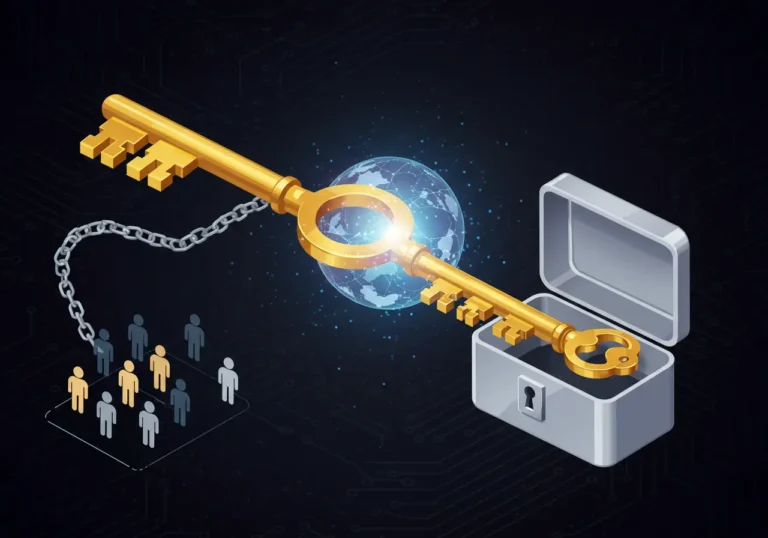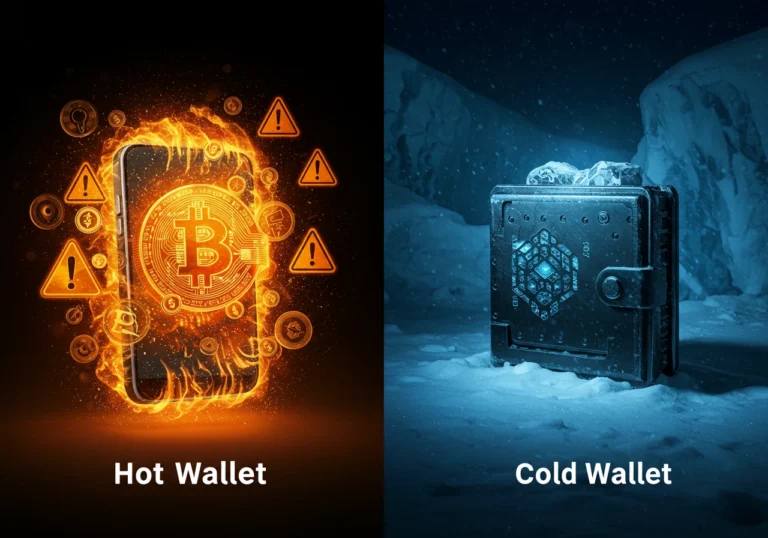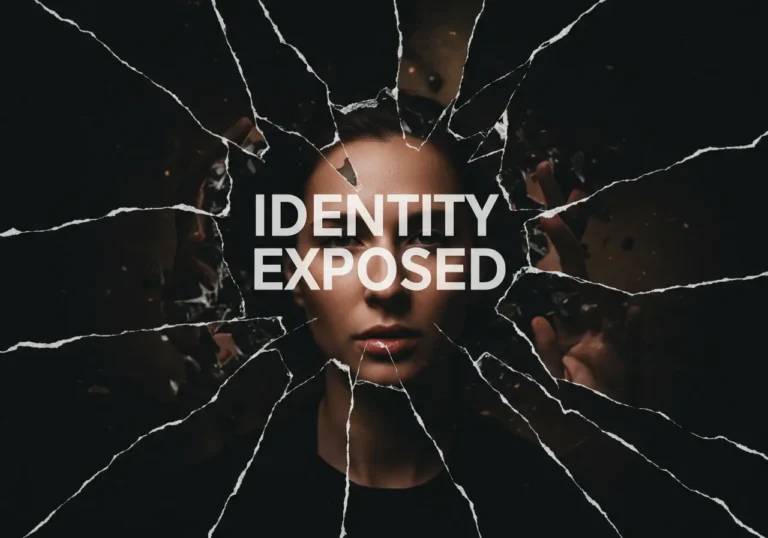Crypto Scam: The 10 Most Common Scams (and How You Can Avoid Them Without Losing Sleep)

Crypto Scam — Sometimes Crypto Can Be a Bit of a Jungle
You hear it all the time: “Crypto is the future!”
And maybe it is.
But here’s the thing nobody tells you upfront — this shiny new world also has a dark side. Where there’s money, there are people trying to steal it. And in crypto, they don’t need a mask or a gun. Just a phone or a laptop.
Crypto scam is just a fancy term for tricking someone out of their coins. Sometimes it’s through a fake email. Sometimes it’s a full-on fake website. Either way, the goal is always the same: take your money.
The good news? If you know what to watch for, you’re already ahead of the game.
1. Phishing: “Click Here or Lose Everything”
You get an email. It looks official. Maybe it even says your account is locked. You click the link… and just like that, they’ve got your info.
Sound familiar?
This is one of the latest crypto phishing scams to be aware of. It’s sneaky because it plays with your fear. And your instinct to “fix it fast.”
What to do instead:
- Never click on links from random emails or DMs.
- Always go straight to the site yourself by typing it in.
- Turn on two-factor authentication (ideally, not just SMS).
2. “Guaranteed Profits” — A Classic Trap
There are platforms out there that promise huge returns. Fast. With no risk. Sounds too good to be true?
It is.
These are often Ponzi or pyramid schemes. New money is used to pay old investors. Until the whole thing collapses.
Spot the red flags of a fraudulent crypto investment platform:
- They don’t explain how the money is made.
- No real team behind it (or fake LinkedIn profiles).
- They rush you to “get in now” or miss out.
Ask yourself: Would you trust a stranger at the bus stop with your money? Then don’t do it online either.
3. The “Fake Friendship” Scam (Pig Butchering)
Yep, it has a weird name. But it’s happening a lot.
A scammer reaches out online. They’re super friendly. Maybe even flirty. Over days or weeks, they build trust. Then they introduce a “crypto opportunity.” You invest a little, it grows. You invest more… and then poof — they vanish.
This is called a pig butchering scam because they “fatten” the victim up before taking it all.
What to do if it happens to you:
- Cut off contact immediately.
- Save all messages and receipts.
- Report the crypto scam to the authorities — don’t stay quiet.
4. Fake Wallet Apps That Steal Your Coins
You go to download a wallet app. Looks normal. Works okay. But when you transfer your coins in, they’re gone.
Scammers clone legit-looking apps just to get your private keys or login info. One small mistake… and it’s over.
How to identify a fake crypto wallet app:
- Only download from official websites or app stores.
- Check reviews (if there are only 3 and all say “Great app!”… run).
- Test it with a tiny amount before putting real money in.
5. “Hi, I’m a Crypto Influencer — Trust Me!”
Someone with a big profile picture messages you on Twitter or Telegram. They’re famous (or pretending to be). They’re giving away tokens. Or they’ve got a “secret group.”
Here’s the truth: impersonation scams involving crypto influencers are everywhere.
Scammers make copycat accounts and reel people in with flattery, promises, or fake giveaways.
Play it safe:
- Only trust verified accounts.
- Never send crypto to claim “free” crypto.
- Always check official sites for real promotions.
6. Rug Pulls: When Developers Disappear Overnight
This one’s brutal.
You find a new project. The graphics are slick. The roadmap looks solid. You buy in. Then, suddenly — the developers pull the liquidity or disable selling. You’re left holding a worthless token.
This is known as a rug pull. And it happens fast.
How to spot one coming:
- No contract audit.
- No team transparency.
- Huge portions of the token owned by one wallet.
Stay curious. Ask questions. Don’t be afraid to walk away.
7. Group Chat Traps (Telegram and Discord)
Crypto communities can be great for learning. But they can also be full of traps.
Scammers love sending DMs that say things like:
“Hey! I noticed you’re interested in [insert token]. Want to join a secret group?”
Or:
“Limited-time presale — act now!”
These are common Telegram and Discord crypto scams. The platforms aren’t the problem — the people hiding in them are.
What helps:
- Never click unsolicited links.
- Turn off DMs from strangers.
- Ask real questions in public channels — scammers hate that.
8. Fake Token Sales (ICOs or IDOs)
A brand-new token is launching. The website looks high-end. The timer is ticking down. You rush to invest…
Then the website vanishes. So does your money.
Before joining any sale, ask yourself this:
Is [this crypto project] a legitimate investment or a scam?
Check before you click:
- Do they have a whitepaper that actually says something?
- Can you find the team members anywhere real?
- What are people saying about it in trusted forums?
9. Fake Customer Support That Robs You
You’re trying to fix an issue with your wallet. You search online. You find a support number or chat. They ask for access to your screen.
Next thing you know, they’ve drained your wallet.
Yup, that wasn’t real support.
Always:
- Use only the help links on official websites.
- Never share your screen or private info.
- Be cautious with Google ads — scammers sometimes fake those too.
10. Scary Pop-Ups That Say “Transfer Now!”
Suddenly, a message pops up:
“There’s a problem with your wallet. Transfer your funds to this secure address immediately.”
These fake security alerts are designed to cause panic. And panic = bad decisions.
What to do:
- Don’t click anything in the pop-up.
- Close the tab and go to the official site.
- If unsure, ask someone you trust before doing anything.

So… What If You Got Scammed?
First, don’t blame yourself. Seriously. These scams are designed to be convincing. And fast.
Here’s what you can do:
- Try contacting the platform where it happened. Sometimes they can help.
- Report it to local authorities.
- If possible, talk to a lawyer — there is legal advice for crypto scam victims, and it’s worth exploring.
- You can also look into how to recover stolen cryptocurrency from scammer, though results may vary depending on the situation.
Keep every bit of evidence — screenshots, chats, emails. They might help later.
Quick Recap (Because We All Need One)
- Phishing: Don’t click sketchy links.
- Fake Platforms: Watch out for “guaranteed returns.”
- Pig Butchering: Online strangers offering investments = red flag.
- Fake Wallets: Only download from trusted sources.
- Impersonators: Don’t fall for influencer clones.
- Rug Pulls: Look for audits and real teams.
- Chat Scams: Disable DMs from randoms.
- Fake Token Sales: Do your homework.
- Fake Support: Never share screens or private keys.
- Pop-Ups: Panic is the scammer’s best friend. Stay calm.
Final Thought
You don’t have to be a tech genius to stay safe in crypto. You just need to slow down, ask questions, and trust your gut.
And hey — if you’re reading this, it means you care. That alone puts you miles ahead of many others.
Stay smart. Stay curious. And don’t let the bad guys win.

Hello, I’m Edmilson Dias, founder of CoinBringer. I created this platform to guide people through the fast-moving world of cryptocurrency with clarity and safety. With years of research in blockchain and digital security, my goal is to translate complex topics into practical knowledge, offering reliable tutorials, safety insights, and guidance for both newcomers and experienced users.
Discover more from CoinBringer
Subscribe to get the latest posts sent to your email.







